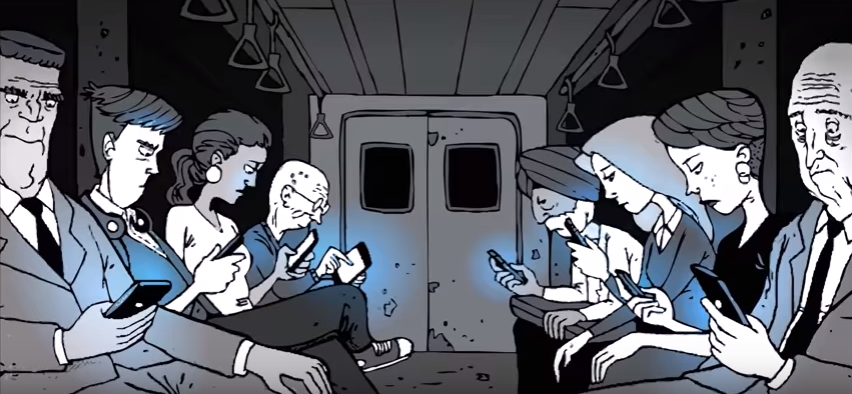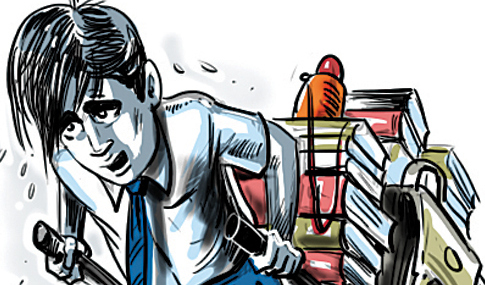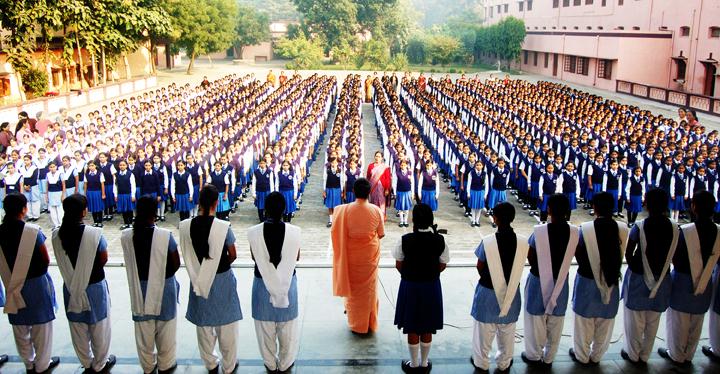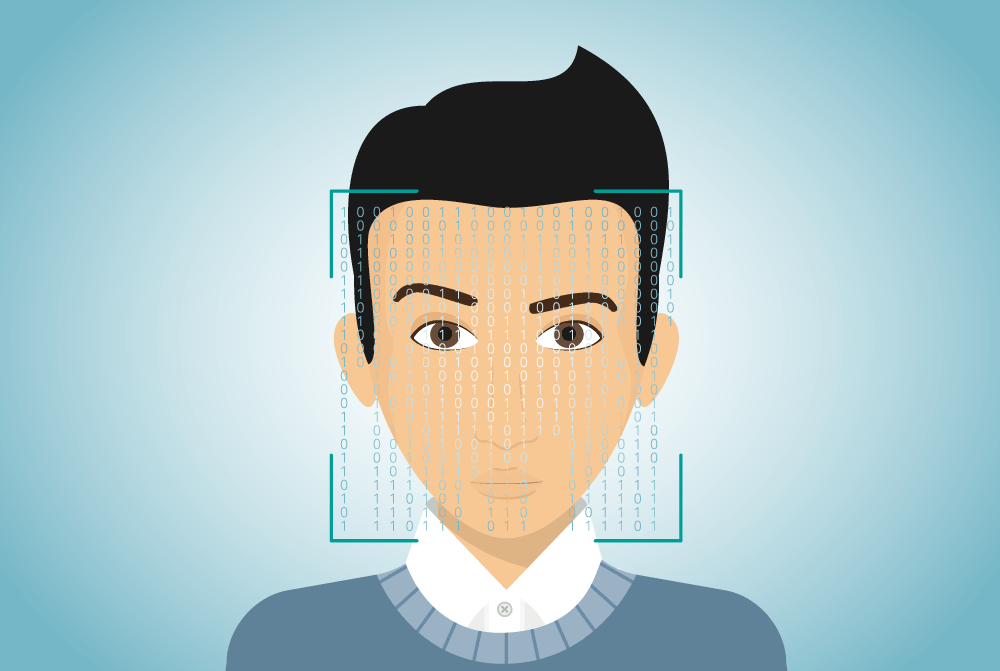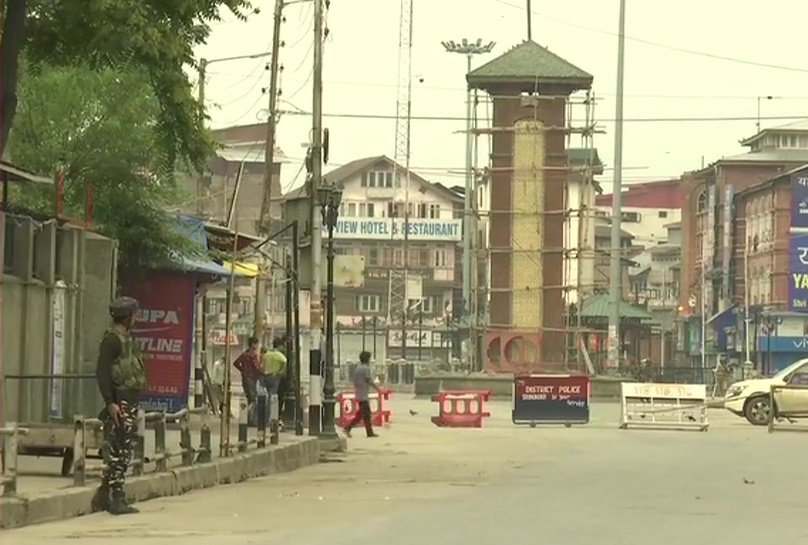
Since the issuance of the Aadhaar card, any talk of surveillance and breach of privacy has been constantly met with a jibe, “Why, what are you doing that makes you want to cloak it with privacy?” This jibe has been constant, be it strangers or people close to you. More so, if people are close to you. The overpowering documentation and constant surveillance of our identity and lived experience has been normalised to an extent, that resistance towards it is seen as a misdirected anger that’s to be ignored or a suspicious behaviour that needs to be checked. Working with schools over the last few years, has made me think how the institution takes measures to internalise these dread and indifference effectively within its actors.
The present educational discourse in the country steered by the neoliberal agenda has a distinct vocabulary which culminates towards institutional efficiency and good maintenance. The move towards normalising surveillance in schools through CCTVs and overt documentation in one more addition to the list of other measures in this direction.
As an educator my interaction with schools have been time and again marked by understanding this deepening socio- cultural and administrative phenomenon of documenting and earmarking people- teachers, students, and staff for good or bad. The interplay of these administrative measures and cultural rules and regulations, serves as an optimum eco-system in the formative years to manufacture compliance to the state mechanism of control.
I was working in one of the high-end private schools in Chennai. As an administrative measure, the school had to submit a plethora of information- list of all their students, personal information, information about parents, income group, caste category linked along with their Aadhaar card information to the government’s online portal. The school was running late in submission and did not have information on caste category of most of the students. One of the suggestions by the school management to the teachers was to mark the students under the categories by “looking” at them. It was surprising to observe that the teachers and staff implicitly understood and accepted the instruction. These kinds of conversations are not unheard of in private schools. The private schools have actively used the excuse of documentation of children for earmarking them based on the socio-economic positions and denying admissions in many cases, especially students who seek admission under RTE 12 (c). Under the guise of efficiency and effectiveness, the new forms of management seem to complement and institutionalise the older patterns of segregation and discrimination effectively.
As newer technologies gain prominence in the educational ecosystem and schools make attempts to shift towards the change and social legitimacy, it is important for us to understand what legitimacy they endow on the schools. The CCTV cameras are understood synonymous to safety measures and the comprehensive Enterprise Resource Planning (ERP) softwares which record from personal information to infrastructure, teacher performance, and student achievement as a key management tool for administration.
The recent reports of shocking display of violence against children within school campuses- the murders, sexual assaults, deaths due to security lapses, has troubled the entire country. The anxiety driven parents, the vigilant school administration, and the public have responded to the violence by calling for installation of CCTV cameras at appropriate places within the campuses. Last year, within these circumstances CBSE issued a notice to all the affiliated schools enlisting guidelines to ensure child safety in school premises. The safety guidelines state police verification of all staff, closed monitoring of people entering schools, installation of CCTVs for closed monitoring within schools leaving behind no blind spots.
Recently, the Delhi Government announced a budgetary allocation of 175 crores to install CCTV in the government school premises to measure safety.
Video surveillance in public and/ or publicly accessible spaces is not anymore, an exceptional or rare occurrence. The exponential growth of CCTV has not taken place in a social vacuum. It reflects a worldwide trend where CCTV has been transformed from a local initiative into a phenomenon that penetrates the urban life in every major city. It has become a normality to deal with security concerns. Within its usage, all security concerns have been levelled. Be it, the concerns for a safe neighbourhood or a close monitoring of teachers’ performance in school, all need the same extent and kind of monitoring.
In the schools I have worked with, the impact of CCTV on the members of the school have been varied and equally troubling. Be it teachers who feel conscious and doubtful of their teaching, coordinators, who constantly threaten the students and teachers to use the footage as evidence for taking actions against them, or children who modify and tune their behaviour under the camera or some who have internalised it as their evidence based vocabulary to address their grievances against their peers, teachers, and staff.
In all these instances, it is troubling to see the normalising of surveillance as an effective and efficient substitute for morality and as a means to restore ethics. This constant creation of a false dichotomy of safety v/s privacy while creating a discourse around surveillance is a perversion of a neoliberal agenda which constantly strives to fragment the society with its overt individualisation, and instilling fear and doubt, as a way to exercise power.
In the age of daily outrage of one kind or another, the CCTV promises truth and justice to the individuals by creating an excitement over exercise of power of monitoring over masses and promising hard evidence when things go wrong. Within the loom of extending privatization of education, the schools are turning more and more alienated from the communities they locate themselves within. There is an intrinsic act of violence embedded within the measures taken by schools to constantly document and monitor their actors.
These larger acts of violence, within and outside of schools, needs to be examined within the lens of deterring social fabric resulting in steep social stratifications. When the acts of violence are embedded within the communities that breed inequality and fear, surveillance is a counter intuitive method to address the issue. The reorganization of the urban landscape with pockets of affluent population creating stringent means to create exclusive communities of exorbitant displays of wealth and constantly pushing the marginalised to the urban fringes, has resulted in polarization not just in socio-economic determinants, it has within this process built strong walls to block communication, naturalising doubt and criminalising trust.
It is within this environment, the parents raise their children, and demand schools to cater to their young customers, providing them with services and safety at the cost of depriving their own institutions from being sites of creation of knowledge which work towards betterment of society. How often do schools question the values they instil in the children within such environments? What transformative vision do they see for their institutions?
Do they contribute to developing critical citizenship?
The increased surveillance in school raises questions about core legitimacy of the institutional structure of the schools. The public education system in a democracy has the biggest responsibility of inculcating citizenship values in its young minds by creating a microcosm of the larger society, deliberating on its democratic nature, instilling values and skills for a participatory citizen force, the surveillance and monitoring systems under the guise of efficiency practices, cut off the schools from catering to their core responsibility of instilling agency.



